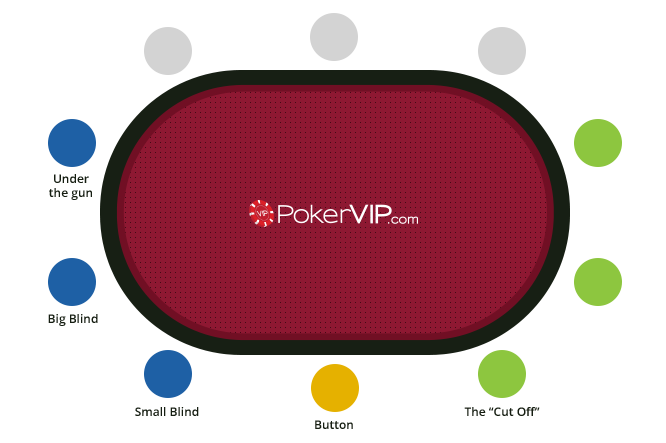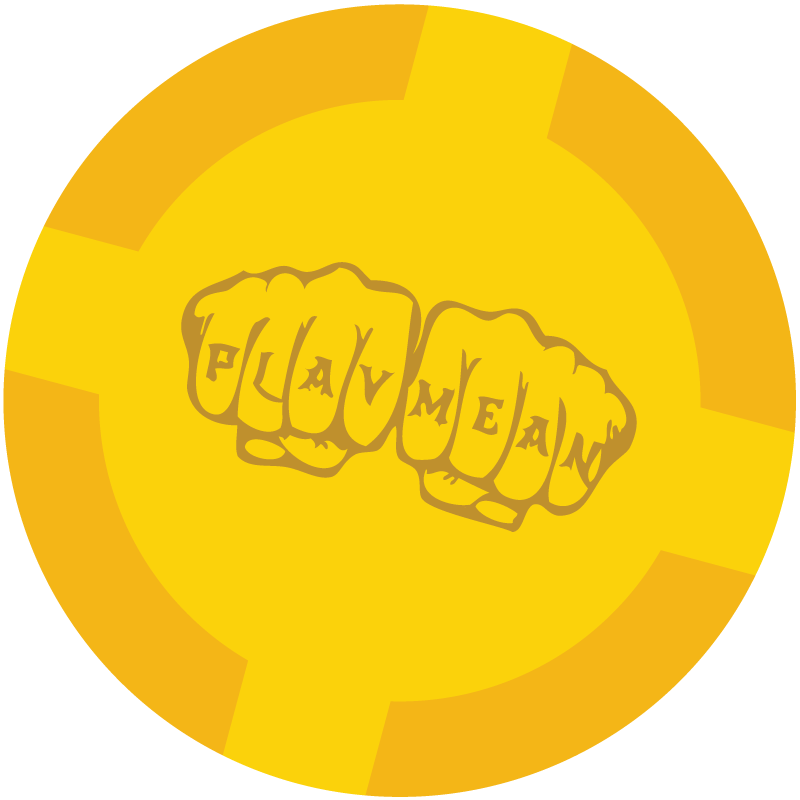Defending against preflop 4bets can be a tricky business, as there are many factors to consider when deciding on the best approach to the issue. Depending on your opponent's perceived ranges, how deep the effective stack is and what our implied and reverse implied odds look like at any given moment and with different types of hands.
It wasn't too long ago, perhaps even only

a few years, where this common piece of advice would be found throughout the different online poker forums. “Don't flat 4bets, it's a bad
poker strategy”
In the current games, flatting-vs-4bets appears to be an increasing trend and is becoming ever more common. So what has changed?
It's partly to do with how the games have changed but partly to do with our outlook and understanding of the game also. It's considered theoretically correct to flat 4bets, whereas it wasn't before. However a certain change in the way the game is played has facilitated this advancement in understanding also.
4bets are simply smaller than they have ever been in the history of poker. Many years ago players were routinely opening to 4bb, even from the BTN. A
3-bet could easily be 15bb which would make a 4bet 35bb or so. Depending on the exact sizings 4bets were often used as all-in raises.
These days it's common for players to make a 2x open on the button and face a 7bb 3bet. 4bet sizing can be anywhere between 15-18bb. That's almost half the size of some of the 4bets many years back.
Price on a Jam
It makes sense to jam vs a 25bb 4bet or larger. Our risk to reward ratio is reasonable if we have some
fold-equity. It's not really so much the case when facing a 15bb 4bet. We will be shoving 100bb here over a relatively small pot. We also should factor in that it is common for players to play deep making the price on a 5bet jam even worse.
4bets are simply smaller than they have ever been in the history of poker. Many years ago players were routinely opening to 4bb, even from the BTN.
One option we can consider is the min-5bet. However this is not typically recommended with 100bb stacks. By the time we have min-5bet to reasonable sizing we will likely be priced in with our entire range including bluffs. If our opponent has any sort of 6bet bluff range we are allowing him to fully realise the
equity of any of the hands he may otherwise have folded if we had jammed ourselves. It's actually a stronger option in most cases to 5bet jam regardless of the poor overlay and deny our opponent the opportunity to fully realise the equity of some of his bluffs.
Assuming the stacks are deeper than 100bb it is ok for us to have a min-5bet range with the intention of folding our bluffs to a 6bet and continuing with our value-range. 100bb deep we generally want to avoid min-5bets, but this doesn't mean that jamming is our only remaining option.
Flat Only Range
It's becoming increasingly common with 100bb stacks to have a flat-only range. There are issues with trying to incorporate a min-5bet range (although this can be fine exploitatively) and there are issues attempting to jam for such a low risk-reward.
We could attempt to 5bet the top of our range and flat the hands lower than this, but it would result in an unbalanced strategy. Our flatting range would be unprotected since we 5-bet all premiums. These leads to the more modern approach of flatting our entire defending range against a small 4bet.
Which Hands to Flat?
Seeing as

4bet pots result in a
low stack-to-pot-ratio with 100bb stacks, we generally prefer those hands which play well in such circumstances. These will be high-card hands which can flop top-pair decent kicker. This will often be enough to play for stacks with postflop against a suitably aggressive opponent.
Premium suited connectors can also be reasonable, although the primary function of these is to ensure that we connect with different types of board
texture. In practice it's completely unnecessary to flat speculative hands vs 4bets since they don't play well with the reduced SPR.
So let's imagine we 3bet BB vs SB and face a small 4bet from the SB. What would our flatting range look like. Something along the following lines
AJs+, 99+, KJs+, KQo
And remember that this includes premium holdings such as QQ+ also.
Position
We should defend a tighter range preflop and not worry if we allow our opponents to generate a small amount of automatic profit with their in-position 4bets
Similar to flatting against 3bets the positions of the two players involved are relevant. If we face a 4bet from UTG we should respond with a significantly tighter range. We should also consider whether we are in-position or out-of-position when facing a 4bet. The SPR is still high enough that we will suffer from a playability disadvantage when we are OOP. We should defend a tighter
range preflop and not worry if we allow our opponents to generate a small amount of automatic profit with their in-position 4bets.
Min-5betting
We can attempt to use a min-5bet strategy in 2 main situations with 100bb stacks.
- We are confident our opponent will not 6bet bluff
- We are 5-betting for value and don't care about balance
In other words it can be ok as an exploitative measure to min-5bet AA/KK and never bluff. This is naturally exploitable but probably won't matter vs the majority of opponents. We should also only do this if we feel we are more likely to generate action this way as opposed to 5bet jamming. Sometimes a min-5bet may actually make us look stronger than directly jamming.
If the stacks get deep then we are perfectly fine to incorporate a min-5bet range which is balanced between bluffs and value hands. Facing a 6bet-jam from our opponents we are not priced in to calling with our min-5bet-bluff range any more. We would include premiums in our min-5bet range but also some high equity speculative hands such as Axs or good blocker hands like KQo. Suited connectors might theoretically be correct once the stacks reach a certain depth for board coverage reasons. This does not apply vs the vast majority of opponents however, and we are better off playing higher equity hands which play well with the decreased SPR.
Large 4bets
Assuming for whatever reason the betting patterns are larger in a certain hand and we face a 4bet which is closer to 25% of the
effective stacks we can now have both a flatting range and a 5-bet jamming range.
Our 5-bet range will consist of premiums and high equity bluffs. Remember that when we are all-in, the only thing that matters is the raw equity of our hand. So certain hands which make poor min-5bet-bluffs such as 66 or 77 (for playability reasons) make decent 5-bet bluff jams because we are guaranteed to realise our equity. The top hands for 5bet-bluff-jams are Axs and PP's.
Keep in mind that depending on the
population tendencies we don't always want a 5-bet jamming range. If we are playing at low limits where the average 4-bet range is very strong we can play an unbalanced strategy where we never bluff-jam and purely shove for value. There is no point bluff-jamming if we have zero fold equity. We may also consider tightening our flatting range if our opponent only 4-bets premiums. We simply want to fold a ton as an exploitative measure.
Exploitative Defense
The average

4bet range of a winning 6-max reg is somewhere between 4-5%. This should increase by position with BTN and SB being the highest and UTG being the lowest.
If we notice our opponent has an overall 4bet range which is significantly below 4% then we should be responding very tightly to his 4bets. We should have no problems giving our opponents a ton of automatic profit in these spots. It may feel as if we are being exploited, but we are the ones exploiting our opponents here because every time they have AA we are probably folding.
Assuming we have a decent sample we should also make use of the
fold-to-5bet stat. In most cases we need around 50% fold-equity for a profitable bluff jam. If our opponent is folding significantly more than this to 5bets we should be expanding our 5-bet bluff range. We may even 3bet some high equity holdings purely with the intention of 5-bet jamming. Something like 66 which is not part of our standard 3bet range can become a decent 3bet if we have the intention of 5-bet bluff jamming against our opponent's 4bets. We can also consider slowplaying part of our value-range by flatting a 4bet if our opponent will be folding a ton of the time to our jam.
If we notice our opponent has an overall 4bet range which is significantly below 4% then we should be responding very tightly to his 4bets.
At the lower limits it is more common to see opponents who have a low fold-to-5bet stat. This is because they are 4betting a tight range and have no intention of folding to further action. This is the situation where we 5-bet jam a merged value range and don't bluff. The top of our range we can jam, the slightly weaker hands we can consider flatting a 4bet or simply folding.
Assuming we have the sample we should also check our opponents 4bet range and fold-to-5bet stats by position. Some players are positionally aware, others aren't. Assuming we don't have the sample we can usually make estimates on our opponent's positional stats based on their overall stats. So if someone has a 4bet range of around 4% it's reasonable to assume they have a 4bet range on the button of around 7% and a 4bet range from UTG of around 2%.
Reverse Implieds
A common mistake when facing 4bets is calling too wide as a result of pot-odds especially vs tighter opponents.
Our pot odds are only the most relevant factor when we are close to being all-in. Assuming we have the correct
pot-odds to call vs a certain range it may not always be a correct call especially when OOP.
This is because we must factor in future postflop play. In certain situations where we are heavily dominated we might
- not make money when we hit if our opponent has nothing
- get stacked when we hit if our opponent has something
It's always important to account for future play. We may need more or less equity than we are being offered by our direct pot-odds. We want to consider other variables also such as how often our opponent will fold in a 4bet pot. If we have decent fold-equity we can get away with having less pot-equity than our direct odds dictate. If we have little fold-equity and will often make dominated hands then we need significantly more equity than our pot odds suggest.
In the following article we will discuss correct approach to postflop play in 4bet pots.
 a few years, where this common piece of advice would be found throughout the different online poker forums. “Don't flat 4bets, it's a bad poker strategy”
a few years, where this common piece of advice would be found throughout the different online poker forums. “Don't flat 4bets, it's a bad poker strategy” 4bet pots result in a low stack-to-pot-ratio with 100bb stacks, we generally prefer those hands which play well in such circumstances. These will be high-card hands which can flop top-pair decent kicker. This will often be enough to play for stacks with postflop against a suitably aggressive opponent.
4bet pots result in a low stack-to-pot-ratio with 100bb stacks, we generally prefer those hands which play well in such circumstances. These will be high-card hands which can flop top-pair decent kicker. This will often be enough to play for stacks with postflop against a suitably aggressive opponent. 4bet range of a winning 6-max reg is somewhere between 4-5%. This should increase by position with BTN and SB being the highest and UTG being the lowest.
4bet range of a winning 6-max reg is somewhere between 4-5%. This should increase by position with BTN and SB being the highest and UTG being the lowest.

